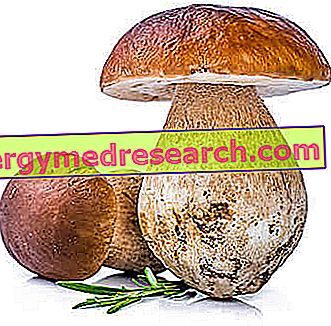The syndrome of bacterial contamination of the small intestine - also known as small intestine overgrowth syndrome ( Small Intestinal Bacterial Overgrowth - SIBO) - is characterized by excessive proliferation of bacteria, especially anaerobes, in the lumen of the small (or small) intestine intestine).

The overgrowth of bacteria in the small intestine compromises the ability to digest and absorb nutrients, especially lipids, triggering the classic symptoms of malabsorption syndromes: flatulence, bloating and meteorism, steatorrhea, diarrhea and intestinal disorders in general.
Bacterial contamination of the small intestine: causes and risk factors
It is believed that the bacterial flora housed in the upper tracts of the digestive tract and the small intestine is mostly represented by contaminants ingested in transit towards the colon. There are numerous mechanisms that prevent the overgrowth of bacterial populations in these traits: gastric acidity, the antibacterial power of biliary and pancreatic secretions, the intense peristaltic activity of the small intestine, the seal of the ileocecal valve, the mucus and IgA immunoglobulins secreted by the intestinal mucosa and its rapid turnover.
From what has been said, it is clear that the various anatomical and / or functional conditions that compromise these defensive mechanisms can favor the development of the bacterial contamination syndrome of the small intestine:
- risk factors such as malnutrition, immunological deficits, aging, hypochloridria (gastric atrophy, gastro-resections or prolonged therapy with gastric acid inhibitors, such as histamine H2 receptor antagonists and proton pump inhibitors);
- motor abnormalities that compromise the peristalsis of the small intestine and mechanical factors: systemic sclerosis, diabetic neuropathy, idiopathic intestinal pseudo-obstruction, accelerated gastric emptying, incontinence of the ileocecal valve;
- anatomical anomalies: gastric atrophy, duodenal and / or jejunal diverticula, stenosis or obstruction, post-surgical alterations (blind bend, intestinal resection or ileo-cecal valve resection, jejuno-ileal valve bypass).
For many years the bacterial contamination syndrome of the small intestine has been recognized as a mainly exclusive problem of important diseases, such as severe deficits in intestinal motility. In fact, in recent years new scientific evidence has depicted SIBO as a rather common disorder, which would affect 30 to 84% of patients suffering from irritable bowel syndrome (IBS). In turn, the symptoms compatible with the clinical picture of IBS are present from 15 to 25% of the population of the Industrialized Countries, with a peak incidence between 15 and 34 years of age and with a frequency about twice in the female sex compared to to the male sex.
Symptoms: how to recognize the bacterial contamination syndrome?
As anticipated, the bacterial contamination syndrome of the small intestine falls within the group of malabsorption syndromes; it can therefore manifest with symptoms such as steatorrhea, watery diarrhea, weight loss, discomfort, abdominal distension with flatulence, meteorism, cramps and pains, and nutritional and vitamin deficiencies, in particular of vitamin B12 (macrocytic anemia). The intensity of the symptoms depends on the degree of bacterial contamination of the small intestine; however, their high specificity leaves numerous diagnostic possibilities open. The signs and symptoms typical of the underlying predisposing pathological condition must of course be added to the typical symptomatic procession of the syndrome of bacterial contamination of the small intestine.
For many decades the gold standard for the diagnosis of bacterial contamination of the small intestine was the culture of a sample aspirated from the proximal small intestine, a laborious and invasive procedure, now retired from breath tests: after the administration of a known quantity of carbohydrates (typically glucose, lactulose or xylose) the concentration of carbon dioxide or hydrogen in the expired air is measured at regular intervals; an early-onset peak is an indicator of bacterial fermentation of sugar in the small intestine, with gas production - including CO 2 and H 2 - that pass into the blood and from there are removed with respiration.
Drugs and diets-therapy
In the presence of a syndrome of bacterial contamination of the small intestine it is recommended to adopt a sober diet, characterized by small and frequent meals, not processed, and low in sugar and fat. Given the heterogeneity of the microbial species that make up the intestinal microbial flora), a broad-spectrum antibiotic treatment must be associated with the dietary approach; in this sense the rifaximin (Normix, Rifacol) seems to acquire an increasingly important role.
Also important is the possible administration of specific supplements, especially in the presence of a weight loss and signs of hypovitaminosis. The underlying causes responsible for abnormal bacterial growth in the small intestine will then be discussed. Antibiotic therapy is sometimes associated or followed by the administration of probiotics.



